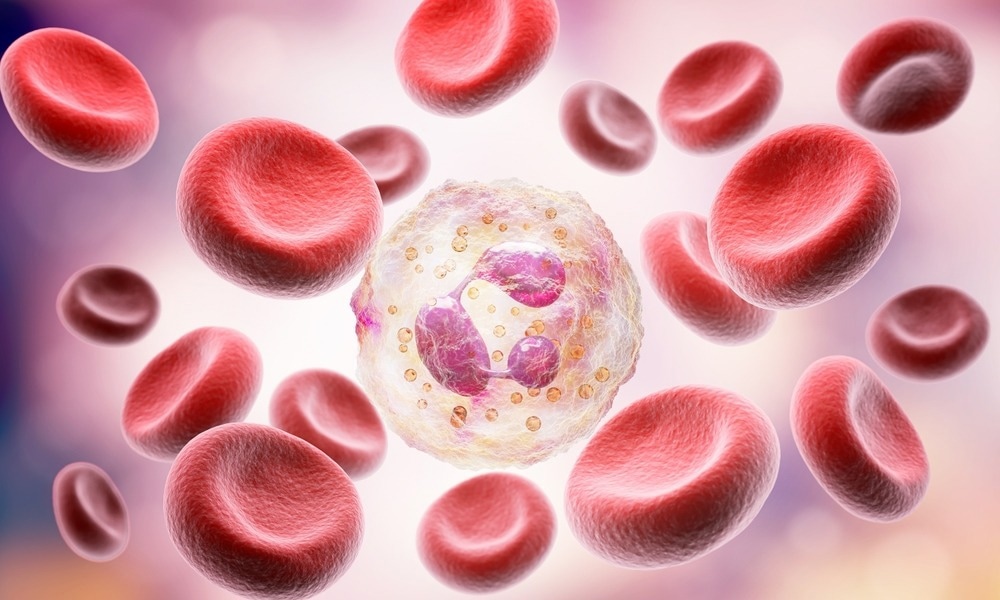Cellular and molecular hallmarks of aging immunity
Advantages and disadvantages of immune modulation
Boosting immunity in the elderly
The clinical perspective
References
Further reading
Immunosenescence can occur in the elderly or aging population and involves a decrease in many immune functions, which leads to the immune system having reduced efficacy when responding to infections or vaccines.

Image Credit: Yuganov Konstantin/Shutterstock.com
The aging process includes a complex and intricate biological development that greatly impacts several organs and biological functions, resulting in aging being a significant risk factor for geriatric diseases. The progressive reduction in physiological homeostasis can cause impaired function and increased susceptibility to comorbidities, opportunistic infections, and even death.
The occurrence of immunosenescence can cause low-grade chronic inflammation as well as a progressive decline in an individual’s ability to stimulate antibody and cellular responses effectively.
Cellular and molecular hallmarks of aging immunity
There have been nine hallmarks that have been associated with the aging process, including (i) genomic instability, (ii) telomere reduction, (iii) epigenetic modifications, (iv) proteostasis loss, (v) deregulated nutrient sensing, (vi) dysfunction in mitochondrial processes, (vii) cellular senescence, (viii) stem cell decline and (ix) changes in cellular communication.
These hallmarks represent common denominators found in the aging population, which account for dysregulation of mechanisms responsible for cellular damage, decline in mechanisms that typically counter damage in the body, causing damage to be exacerbated, as well as collective damage that homeostatic mechanisms cannot reverse.
The trans-NIH Geroscience Interest Group (GSIG) has developed an initiative that aimed to identify the drivers of aging, with seven mechanistic interactions being pursued as the main pillars of research, including inflammation, adaptation to stress, epigenetics, metabolism, macromolecular damage, proteostasis, and stem cells.
This initiative overlaps the nine hallmarks proposed, and the potential of this research may hold significant implications for the rate of aging and delay of chronic disorders found in the aging population.
The hallmarks of aging comprise immune cell dysregulation, while other cells progress towards an apoptosis-resistant inflammatory phenotype without the capacity to replicate, known as a senescence-associated secretory phenotype (SASP). SASP can cause increased production of specific cytokines, chemokines, microRNAs, as well as pro-inflammatory signals that are involved in the mediation of immune cell migration and activation.
This phenotype progresses the low-grade chronic inflammatory state that is observed frequently in the elderly population and further advances the dysregulation of immune cells.
Advantages and disadvantages of immune modulation
Immunosenescence is usually associated with the failure of the adaptive immune system, including B and T cells. However, evidence also shows the impact of aging on the functionality of the innate immune system.
B cell production, which is fundamental for the immune system, has been shown to decrease with age, and this has been associated with a decline in progenitor cell populations, ultimately impacting protective antibody responses over time, including the development of memory cells after infections or vaccinations.
An example of an immune cell affected by aging includes neutrophils, a phagocyte that holds a significant role in inflammation in order to eliminate pathogens through phagocytosis.
Neutrophils hold a critical role in immune modulation, with this immune cell being recruited to infection sites rapidly due to proinflammatory cytokines and chemokines being produced, such as IL-1, IL-8, and TNF-α. These immune cells clear pathogens in the site of infection through phagocytosis as well as releasing antimicrobial proteins, and once their role is complete, they undergo apoptosis or cell death.

Image Credit: Anusorn Nakdee/Shutterstock.com
However, as healthy neutrophils rely on a network of cellular pathways for their function, aged neutrophils are impacted through signal transduction within multiple cellular pathways, including the dysregulation of the JAK-STAT and PI3K pathways.
The PI3K pathway is involved in the dysregulation of migration, phagocytosis as well as other immune functions, with abnormal activation of its signaling cascade disrupting neutrophil migration.
Additionally, aged neutrophils have a decreased capacity to perform phagocytosis as a result of having a reduction in surface expression of the Fcγ receptor CD16. However, this is not an exclusive contributing factor to decreased phagocytosis.
The JAK-STAT pathway also holds a significant role in retaining homeostasis for neutrophils as a critical contributor to the protective response of the immune system. In vitro studies have found that granulocyte-macrophage colony stimulating factor (GM-CSF) can rescue neutrophils from their short lifespan, preventing them from going through apoptosis after clearing infections in young individuals as a result of the JAK-STAT signaling pathway.
However, this protective mechanism is non-existent in the aging population, and increased apoptotic signaling that occurs with aging can result in premature cell death in neutrophils, with an even shorter lifespan that contributes to ineffective responses against foreign pathogens, infections, and vaccines.
Boosting immunity in the elderly
With an aging population, novel approaches to support or boost immune function in the elderly population are critical. Researchers have undertaken initiatives for developing vaccines for the growing elderly population in order to improve their immune response.
The most common strategy to improve immune responses consists of increasing the dose of antigen or providing additional adjuvants into vaccine formulations. However, recent research has also highlighted the potential benefits of senolytic and immunomodulatory drugs in order to improve vaccine response.
The use of systems biology in order to identify target pathways or proteins involved in ineffective immune responses can be significant for designing adjuvant therapies, with formulations being created to stimulate these pathways to improve the overall response to a pathogen.
Senolytics may also be a potentially beneficial research area for the aging population, with senolytics working to selectively stimulate apoptosis of senescent cells that may boost the immune response by removing inhibitory cell populations.
Additionally, external factors, including nutrition and lifestyle, can also impact immune function, such as the process of phagocytosis, which can also be addressed through physician-led changes in order to boost immune functionality.
The clinical perspective
Healthcare professionals can face many challenges and considerations when caring for the elderly population, who are associated with multiple comorbidities as well as being at higher risk for adverse reactions to medicine.
Approximately 80% of older people in the fast-growing aging population have been reported to have two more chronic diseases. These patients require robust health services in order to provide consistent and long-term care, which can necessitate medical professionals and specialists to provide support through prescription refills, medication dosage adjustments, as well as continuous monitoring.
Failure to monitor these immunocompromised and vulnerable patients may lead to the risk of new symptoms being displayed, which may result in further health decline.
Personalized care for vulnerable groups, while challenging, can overall maintain health and sustain the quality of life for these patients, with lifestyle and nutrition plans along with medical care contributing to immune response improvement.
References
- Crooke SN, Ovsyannikova IG, Poland GA, Kennedy RB. Immunosenescence: A systems-level overview of immune cell biology and strategies for improving vaccine responses. Experimental Gerontology. 2019;124:110632. doi:10.1016/j.exger.2019.110632
- Lee K-A, Flores RR, Jang IH, Saathoff A, Robbins PD. Immune Senescence, immunosenescence and aging. Frontiers in Aging. 2022;3. doi:10.3389/fragi.2022.900028
- Sadighi Akha AA. Aging and the immune system: An overview. Journal of Immunological Methods. 2018;463:21-26. doi:10.1016/j.jim.2018.08.005
- Santoro A, Bientinesi E, Monti D. Immunosenescence and inflammaging in the aging process: Age-related diseases or longevity? Ageing Research Reviews. 2021;71:101422. doi:10.1016/j.arr.2021.101422
- Sharma R, Diwan B, Sharma A, Witkowski JM. Emerging cellular senescence-centric understanding of immunological aging and its potential modulation through dietary bioactive components. Biogerontology. 2022;23(6):699-729. doi:10.1007/s10522-022-09995-6
- Weinberger B. Immunosenescence: The importance of considering age in health and disease. Clinical and Experimental Immunology. 2016;187(1):1-3. doi:10.1111/cei.12879
- Zhu Y, Liu Y, Jiang H. Geriatric health care during the COVID-19 pandemic: Managing the health crisis. Clinical Interventions in Aging. 2022;Volume 17:1365-1378. doi:10.2147/cia.s376519
Further Reading
Last Updated: Nov 21, 2023